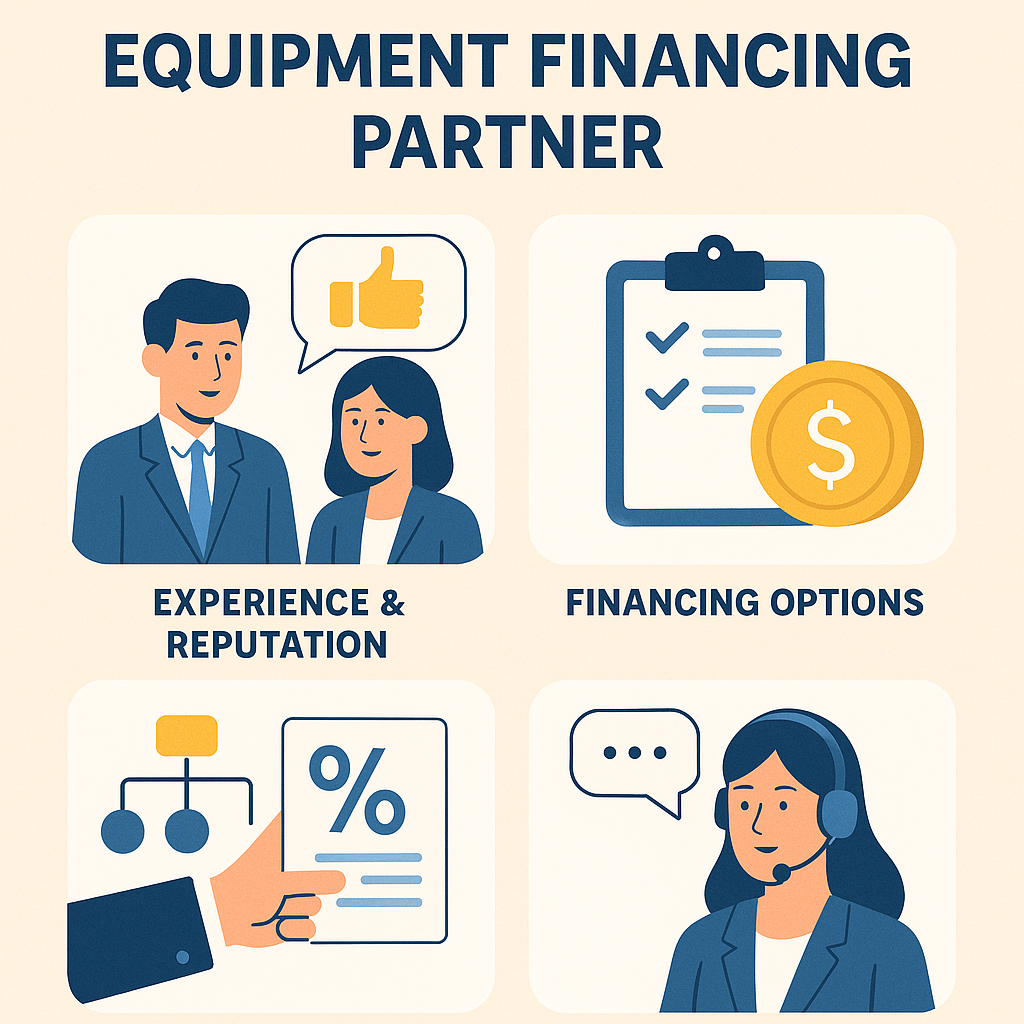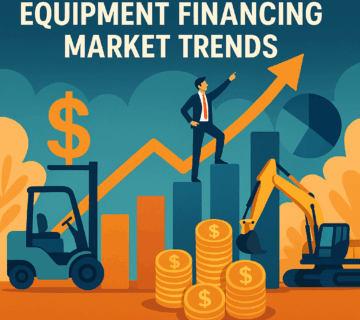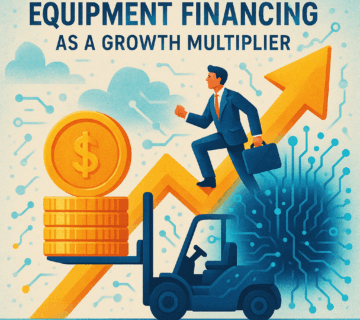10 Mistakes to Avoid When Financing New Equipment

Financing new equipment can be a game-changer for businesses, especially for startups looking for easy equipment financing solutions. Whether you’re launching a new venture or expanding operations, equipment purchases are often necessary—but how you finance them can make or break your cash flow. While equipment financing for startups is widely accessible today, there are still many traps that can lead to poor financial outcomes.
Let’s dive into the 10 most common mistakes businesses make when financing new equipment and explore how to sidestep them effectively.
1. Not Comparing Multiple Financing Options
Choosing the first option that comes your way is never a good idea. While some equipment vendors may suggest in-house financing or refer you to their partners, that doesn’t always translate to the best equipment financing companies for your needs.
What You Should Do:
- Request quotes from multiple lenders, including equipment financing companies for startups.
- Look for flexible terms, transparent fees, and competitive rates.
- Explore both traditional banks and alternative financing providers that specialize in startup equipment financing.
2. Overestimating the Equipment’s Lifespan
A common error, particularly among startups, is to finance equipment over a longer period than it will actually be useful. This creates the burden of ongoing payments for outdated or inoperative equipment.
Tip:
- Match your loan duration with the actual usable life of the equipment.
- Consider leasing if the equipment has a short tech cycle or is prone to rapid obsolescence.
3. Ignoring the True Cost of Ownership
Too often the full cost of ownership is overlooked, only the monthly payments are considered This includes not only financing charges but also installation, maintenance, downtime, insurance, and upgrades.
What to Include:
- Initial purchase price
- Interest and finance charges
- Maintenance contracts
- Training and onboarding costs
- End-of-life disposal or resale planning
4. Skipping Lease vs. Loan Evaluation
Choosing between leasing and borrowing is a strategic decision. Leasing may offer easy equipment financing options with low upfront costs and built-in flexibility—ideal for startups aiming to conserve capital.
Consider Leasing If:
- Your business has fluctuating cash flow.
- The equipment becomes obsolete quickly.
- You want access to upgrades without ownership.
5. Not Reviewing Business Credit Health
Your business credit score plays a pivotal role in determining financing eligibility and rates. A weak credit profile can limit your access to the best equipment financing companies or subject you to less favorable terms.
Action Steps:
- Get your Experian and Dun & Bradstreet company credit reports.
- Dispute inaccuracies and pay down liabilities.
- Establish trade lines with vendors to improve your profile.
6. Overfinancing or Buying Unnecessary Equipment
Startups, in particular, may get caught up in overbuying with the idea that more equipment equals faster growth. In reality, excess inventory or idle equipment ties up valuable capital.
Avoid This By:
- Conducting a realistic needs assessment.
- Only financing critical, revenue-generating tools.
- Scaling purchases incrementally as your business grows.
7. Skimming Over the Fine Print
A lot of entrepreneurs fail to read their loan agreements carefully. This can lead to unexpected fees, penalties, or responsibilities that weren’t originally anticipated.
What to Watch For:
- Balloon payments or adjustable interest rates.
- Early repayment penalties.
- Insurance, servicing, and repair obligations.
- End-of-term buyout clauses (in leases).
8. Ignoring Tax Advantages and Implications
Many financing solutions come with potential tax benefits, but only if properly utilized. Missed savings or increased tax obligations may arise from ignoring these.
How to Maximize Tax Benefits:
- Consult a CPA familiar with equipment financing startup scenarios.
- Take advantage of Section 179 deductions where applicable.
- Track depreciation if you own the equipment outright.
9. Rushing Through the Application Process
In an attempt to get equipment quickly, many business owners submit incomplete or inaccurate applications, leading to delays or denials.
Be Prepared With:
- Updated financial statements.
- Tax returns for the past 2 to 3 years.
- A clear business plan showing how the equipment will generate ROI.
- Vendor quotes or purchase orders.
10. No Contingency Planning
Financing should always include a “what if” analysis. Market fluctuations, seasonal slumps, or unexpected costs can strain cash flow, making it hard to meet monthly payments.
Prepare By:
- Building a cash reserve or emergency fund.
- Choosing lenders that offer grace periods or payment deferments.
- Including financing contingencies in your overall business strategy.
Frequently Asked Questions (FAQs)
Q1: What are the best equipment financing companies for startups?
Some of the best equipment financing companies for startups include Balboa Capital, Crest Capital, and National Funding. These lenders offer flexible terms, minimal documentation, and work well with newer businesses.
Q2: How does easy equipment financing work for startups?
Easy equipment financing typically involves minimal paperwork, quick approval processes, and flexible terms that cater to small and growing businesses. It’s ideal for startups needing fast access to operational tools.
Q3: Can a startup with low credit get equipment financing?
Yes, there are lenders who specialize in equipment financing for startups with limited or poor credit history. However, expect higher interest rates or the need for a personal guarantee.
Q4: Is it better to lease or finance equipment for a new business?
Leasing offers flexibility and lower upfront costs, which is often preferable for new businesses. Financing provides ownership and long-term cost savings, especially for essential and long-lasting assets.
Q5: What’s the typical term length for startup equipment financing?
Terms vary widely but generally range from 24 to 72 months, depending on the equipment’s value and expected useful life. Lenders may offer shorter terms for technology-related assets.
Q6: Is it possible to obtain finance for equipment without having a business credit history?
Yes, many lenders offer startup equipment financing based on your personal credit score, business plan, and revenue projections rather than existing business credit history.
Conclusion
Financing new equipment is a powerful tool that can enable your startup or growing business to scale operations, enhance productivity, and stay competitive. However, it’s crucial to make informed decisions by avoiding these 10 common mistakes. By thoroughly comparing options, understanding terms, and planning for the long haul, you can access easy equipment financing while protecting your financial health.
Always consult with industry experts, financial advisors, and trustworthy lenders when considering your next equipment investment. And remember — the right financing decision can unlock your business’s full potential.




No comment